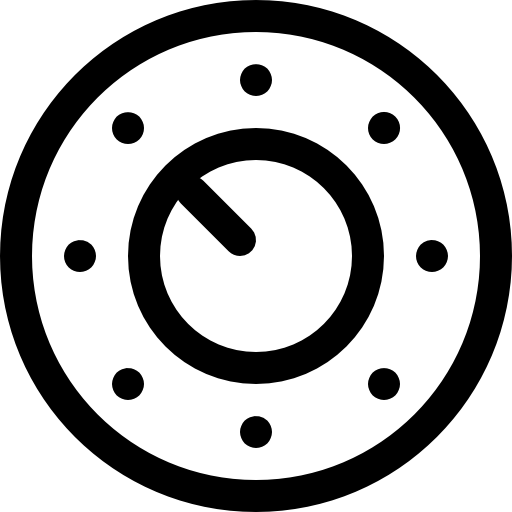What’s the Difference and Which is Best?
Conduction or convection, whether you’re new to vaping or you’re a seasoned dry herb vaper, understanding the ins and outs of your device can help to enhance your experience.
The terms ‘convection’ and ‘conduction’ might be familiar to some, while to others, they might sound like a foreign language. No matter where you fall on this spectrum, this post is your definitive guide. Here, we’ll dive into a detailed description of each heating method and offer a comprehensive comparison to help you navigate the world of vaping with ease and confidence.
What We Will Cover
- What is Conduction?
- What is Conduction Best For?
- What is Convection?
- What is Convection Best For?
- Which One is Best For You?
What is Conduction?
Wordy version: Conduction is the heating method by which the temperature of a substance or material is increased due to direct contact with a heating source.
Less wordy version: Hot thing touches material, makes material hot.
Think of a stove top. The pot you place on top of a heating element is going to act as the conductor, the water is the material you want heated. Heating element (heat source) is in direct contact with the pot (conductor) which transfers the heat to the water (material).
This is actually two steps of conduction. The direct contact between the pot and the stove top is heating by conduction. The direct contact between the pot and the water is also a conductive reaction. You could add a third by dropping some ingredients into the water, which would then be acted on by conduction again.
Deep Dive into Conduction
If you don’t really care about the nitty gritty, you can skip this bit. However, we think the way conduction works is pretty cool (hot, actually). The heat being transferred from one object to another is caused by the vibrations and movement of the molecules which compose that material.
When a material (like steel) gets hot, its molecules get excited and start to dance around. The more vigorously they dance, the hotter the surface of that material gets. When that hot surface makes contact with another, the receiving surface will have its molecules get all excited and start dancing around too.
Side note: Does heat cause the molecules in a material to vibrate, or is it the vibration of these molecules that we perceive as heat? This interplay between energy and motion lies at the heart of understanding how substances heat up and cool down.
The reaction continues from the molecules on the outside toward the molecules on the inside. This is what makes defrosting meat a pain. Too quickly and the outside gets hot enough for the meat to cook, while the inside remains still frozen.
You might be wondering how defrosting meat is relevant to dry herb vaping. It’s actually a good illustration of one of the drawbacks of conduction vapes, uneven heating due to this “outside-in” heat transfer can lead to inefficient use of material.
Conductivity
Different materials have greater conductivity than others, that is they are “good conductors”. Ceramic, steel, glass and aluminium are all examples of good conductors.
This is worth considering when reading the spec sheet of a conduction vape you’re about to buy. You want a material that is durable enough to handle many heat cycles, and conductive enough to heat up quickly and evenly. This saves on battery power and makes your device more efficient.
What is Conduction Best For
When it comes to choosing which heating method is best for your needs, conduction is worth considering for the following reasons:
 Cost Efficiency
Cost Efficiency
Dry herb vapes that use conduction have a simpler design and are easier to make. That means the savings are passed on to you in the form of a cheaper device.
 Ease of Use
Ease of Use
A simple design doesn’t just allow for a lower price, it also means the device is easier to use. Typically having less parts to interact with, conduction vapes are great for those looking for less fuss.
 Compact Build
Compact Build
With less parts to pack into the casing, vape manufacturers are typically able to design smaller conduction vaporisers than their convection counterparts.
 Battery Efficiency
Battery Efficiency
Conduction vaporizers often use battery power more efficiently. Since they don’t require as much power to maintain heat (especially in maintaining airflow as in convection vapes), the battery tends to last longer per session and over the lifetime of the device.
 Less Maintenance
Less Maintenance
Typically, a conduction vaporiser will require less maintenance than a convection vape. This is again due to the simplicity of design and less working parts. It means there is less to get clogged or require cleaning.
What is Convection?
Wordy Version: Convection is a heating method where heat is transferred to the material through the movement of heated air or fluid, surrounding and passing through the material to evenly distribute the heat.
Less Wordy Version: Hot air moves around and through material, warming it up evenly.
Keeping with our cooking analogy, think of a convection oven. In this oven, a fan circulates hot air around the food. The food (material) doesn’t directly touch the heat source. Instead, the surrounding hot air (heating agent) cooks the food evenly on all sides.
Digging Deeper
Again, if the nitty gritty doesn’t interest you then feel free to move along to the advantages of convection. If you’re curious to know the how and why of convection, read on.
Just like molecules in a solid, when air is heated, its particles are energised and start moving faster. But instead of transferring heat through direct contact, like in conduction, convection uses this excited air to do the job.
Unlike a heating element (as in conduction), air is a gas, it can move and flow. The hot air isn’t fixed like a hot surface and because of this it can pass through the material. A warm breeze moving through a field of grass is going to pass its heat to every single blade of grass that it flows through. If you tried to heat up a field of grass by pressing a hot object to its edge, you’d be wasting your time.
Materials used in convection vaporizers are selected for their ability to withstand high temperatures without interfering with the air flow. Stainless steel, ceramic, and certain types of heat-resistant plastics are commonly used. They need to be tough enough to handle constant heating and cooling but also shaped in a way that optimises the flow of hot air.
What is Convection Best For?
 Even Heating
Even Heating
Convection heating is more likely to heat the material evenly. This is because hot air flows around and through the herb, reducing the risk of hotspots or uneven vaporisation, which is a common issue with conduction heating.
 Efficiency
Efficiency
Convection vaporisers are often more efficient in how they use the herb. The even heating means that more of the material is vaporised effectively, which can lead to better extraction of active compounds.
 Temperature Control
Temperature Control
Convection vapes often offer more precise temperature control. This is crucial for vaping different types of herbs, as different compounds are released at different temperatures. It also allows you to target certain compounds in the herb, and therefore different effects. See this blog post for more info.
 Longer Sessions
Longer Sessions
Convection heating is generally better for longer vaping sessions. The consistent and even heating makes it more suitable for extended use without the need to frequently stir or mix the herb.
 Less Frequent Cleaning
Less Frequent Cleaning
Since there is no direct contact between the herb and the heating element, convection vaporisers often require less cleaning. There’s typically less residue buildup, making maintenance easier.
Which is Best For You?
So by now you should have your head wrapped around the difference between convection and conduction, but which is best for you? Before you can figure out which device is best for your needs, you need to understand what those needs are.
Conduction is for You if…
You’re someone who doesn’t need any bells and whistles. You just want to chuck your herb in the oven and get puffin’. You like thick clouds and aren’t fussy about the temperature of your material.
Maybe you also appreciate a bargain, or you just don’t like spending a bunch of money on something when there is a cheaper alternative that “does the trick”. If something small, inconspicuous, less needy (charging, working parts, buttons and options etc) and inexpensive is what you’re after, go with conduction.
Convection is for You if…
You’re someone who appreciates getting the most flavour out of your material, you want complete control over your sessions and don’t mind paying a little extra. You like the features and options that are available to you by a more advanced device.
Perhaps you don’t want to fuss around having to open up the oven lid and stir the material just so you don’t burn or charr the material, ruining the flavour. You want smooth, flavourful hits and you’re not worried if the clouds aren’t as big.
If something advanced, feature rich and precise which offers control over your sessions, longer duration, efficiency and flavour sounds like your thing, then convection is your best bet.
Conclusion
Now you should have no trouble with these two terms for heat transfer, and hopefully you’re equipped to make the best choice for your next vape. Whether you’re a casual user who values simplicity and cost-effectiveness, or a connoisseur seeking the ultimate flavour and control, your perfect vape is out there. Remember, it’s not just about ‘good’ or ‘bad’; it’s about what’s right for you.
Conduction might be your ally if you’re after something straightforward, affordable, and effective. On the other hand, if you’re willing to invest a bit more for enhanced flavour, efficiency, and a touch of sophistication, convection is calling your name.
Visit chillkiwi to check out our range of conduction, convection and even hybrid dry herb vapes. There’s something for everyone.
